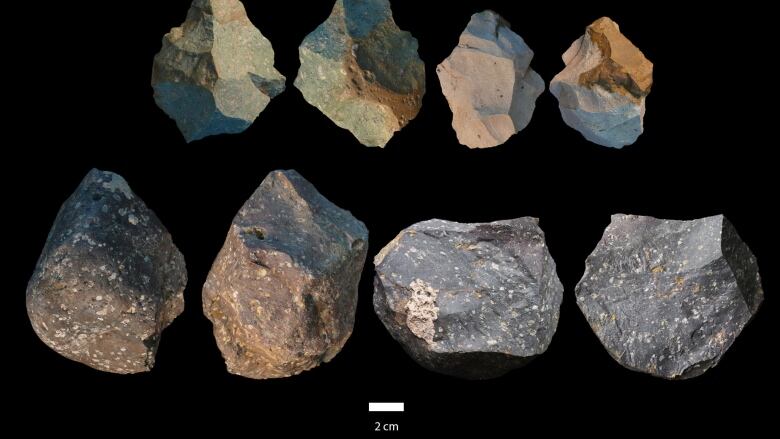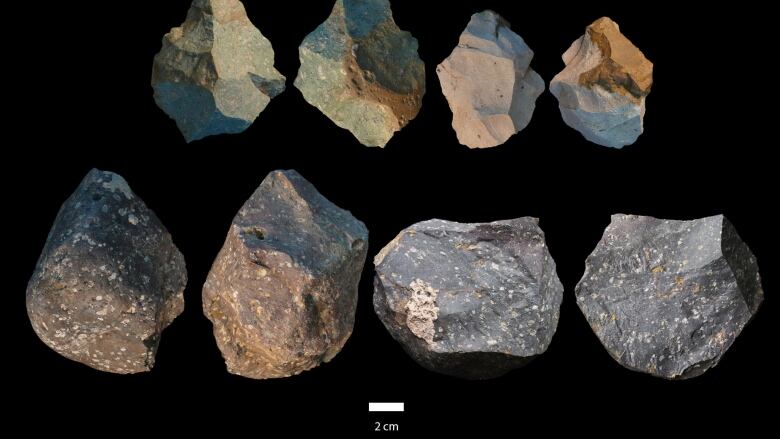Bob McDonald’s science blog: New finds of the remains of Homo erectus and their stone tools reveals a culture that developed new ideas, but didn’t abandon old ones

The discovery of a variety of different types of stone tools with the skulls of Homo erectus remains from more than a million years ago shows that early toolmakers used a bigger toolkit than had been previously thought.
The fossils were found at two sites in Ethiopia, a country which has yielded a trove of remains from our early human ancestors dating back several million years including the famous and much earlier Austrolopithicus specimen, “Lucy.”
This latest discovery included a thick-browed cranium from Homo erectus at one site believed to be from a male that dated to 1.26 million years ago, and a smaller cranium at the second site dating back more than 1.5 million years, believed to be female. This size diversity indicates that there might have been considerably different cultural roles filled by the Homo erectus sexes.
But the diversity of tools was as interesting as the skeletons. Both were accompanied by an assortment of stone tools that were used for different purposes.

Stone tools are rocks that have been carefully selected, then chipped or flaked along the sides to make sharp edges that can be used for chopping and cutting. Markings on fossil animal bones from that time suggests these tools could have been to remove meat from bone among other things.
There’s a great variety in stone tools in the historical record, often corresponding to their age and sophistication. Some are pear-shaped cobbles that have been sharpened along one edge, while others involved more craftsmanship, with both sides sharpened, producing a

